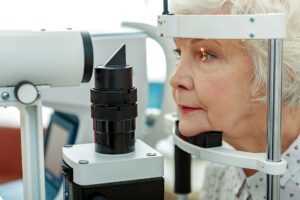
The global ophthalmological community is sounding the alarm that a pandemic could worsen the epidemic of children at risk for myopia.
According to the American Academy of Ophthalmology (AAO), myopia has doubled in the last 50 years to 41.6%. This is a worldwide trend, especially in East and Southeast Asia, where 80% -90% of children and young adults have myopia.

Pathological Myopia is called the refractive error where the myopia is more than 6 degrees, and the axial length of the eye is greater than 26mm.
Myopia is corrected with glasses, contact lenses or surgery (Lasik, Fempto-Lasik, PRK, t-PRK) when the necessary conditions are met.
It is now scientifically expressed that without any action, half of the world’s population will be myopic in 2050. Wearing more glasses is not so serious, but the growing number of people with abnormally “high” myopia is very serious.
Degenerative macular degeneration often occurs in patients with myopia. High myopia increases the risk of eye-threatening eye diseases, such as retinal detachment glaucoma, premature cataracts, myopic pallor.

Children who develop myopia early in life and develop mild myopia face an uncertain future. They have a 50% higher risk of glaucoma, 17% more likely to need cataract surgery and 6 times the risk of retinal detachment.
The best time to intervene is childhood. Scientific studies enhance the child’s outdoor activities, with an apparent positive effect of the sun on reducing the rate of development of myopia.
Prescribing glasses with a low dose of atropine also helps to slow the progression of the disease.
The causes of myopia are genetic and environmental factors. However, the recent dramatic increase in myopia cases seems to be due to environmental factors. People spend less time outdoors and more time working together such as computer and reading time.
As Covid-19 sends more children indoors in front of a computer to attend a virtual school, there is growing concern about accelerating the myopia epidemic.
Parents should limit children in front of computer screens to extra entertainment time in addition to the already increased new school requirements. Children should play and exercise outdoors safely. By properly balancing screen time and outdoor activities, a child’s myopia can be reduced, thus protecting their vision in the future.
The global ophthalmological community now also targets:
• in the education of the health community, the formulation of public health policy imposed by Myopia.
• promoting Myopia as an important public health problem nationally and internationally.
• in collaboration with pediatricians and family doctors, to inform them about the value of children being outdoors as well as the value of early diagnosis of eye diseases.
( “ΑΑΟ”,”Ophthalmology Times”)
Maroussi – Athens
2108055260 & 6945 904252
www.barla.gr






